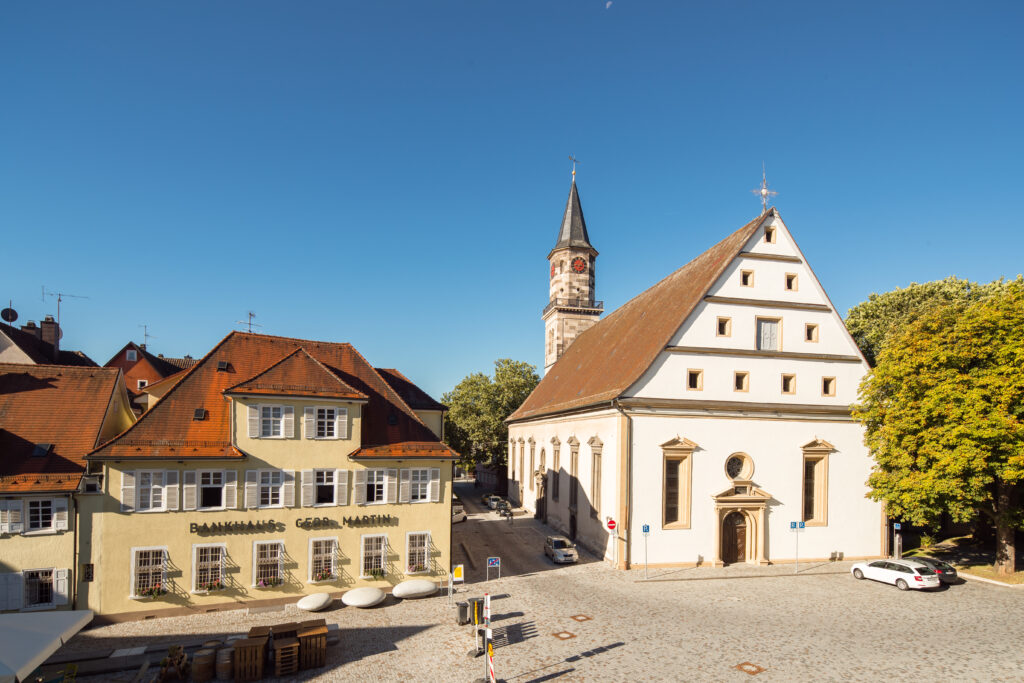City church
Directly opposite the castle is the City Church. The west side of the church is built onto the city wall, thus forming the spatial boundary of old Göppingen to the west.
In 1615, plans began for a new place of worship within the city walls. At that time, the only parish church in Göppingen was the Oberhofen Church located well outside the walls. The medieval Johannes Chapel, located at the site of today’s City Church, had long since become too small. Therefore, a new church was built in 1618 and 1619.
None other than the renowned Württemberg court architect Heinrich Schickhardt carried out the construction. He achieved a particular masterpiece: The sacred building is designed as a transept church, which means that the seating and galleries were originally oriented not longitudinally towards the altar, but transversely towards the location of the pulpit. This orientation towards the proclamation of “the Word” is typical for Protestant churches – Göppingen had been Protestant since 1534 when the Reformation was introduced throughout the Duchy of Württemberg. Schickhardt took the St. Martin’s Church in the then Württemberg town of Mömpelgard, now Montbéliard in France, as a model for the Göppingen church, which he had recently built.
The roof structure is also remarkable: it is one of the largest self-supporting roof structures in Europe, meaning it is without support from below. The church attic was used as to store grain for many years . On the north gable of the exterior of the church, you can still see the wooden gate. Through this, An oak crane could be swung out to hoist the sacks of grain upwards.
The interior now features Art Nouveau ornaments, which date back to an interior renovation in 1909/1910. The last refurbishment took place in 1974-1976, during which the Baroque galleries and the Art Nouveau ceiling were particularly highlighted. The organ dates back to 1981. In addition to irregular church services, the church today serves various cultural events, partly due to its excellent acoustics.
If you move from the City Church along Schlossstraße to the south, you follow the course of the old city wall and eventually reach the so-called “Alte Kasten”.

